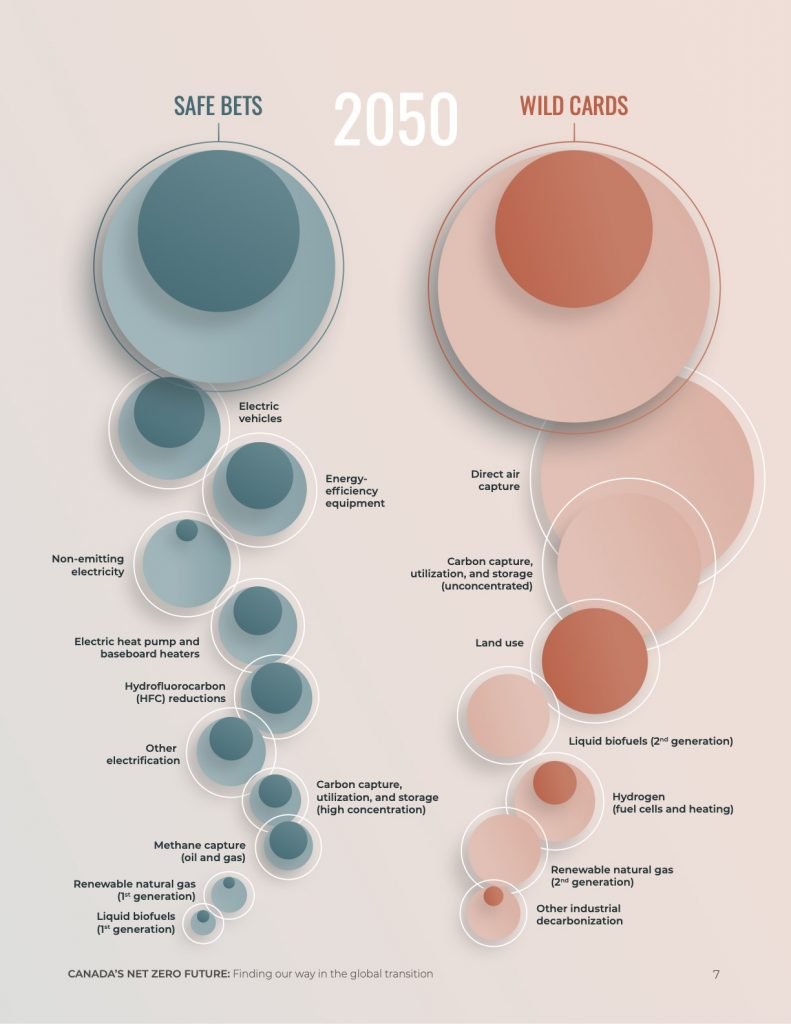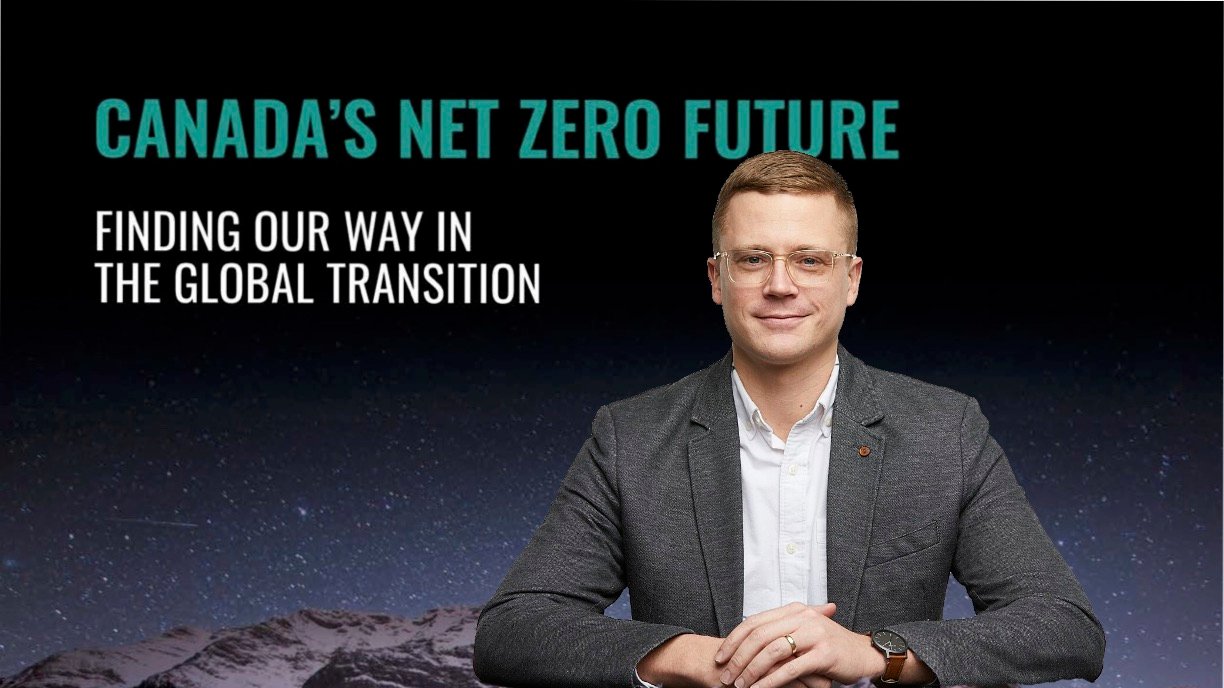By David Dodge
We did our first stories on net-zero homes many years ago. We were captivated by the notion that a home could produce as much energy as it uses and so were you it seems. Our videos on net-zero homes have well over one million views.
Since then a lot has changed. Solar is now the cheapest form of electricity generation, it looks like the national model building code will eventually require homes to be net-zero ready and virtually the entire automotive industry has moved their investments to electric vehicles.
So perhaps it shouldn’t be a surprise that with more and more low carbon solutions in hand and with global action ramping up to fight climate change we are now seeing commitments to net-zero companies, net-zero cities and even net-zero nations.

Canada is one of 120 nations that has pledged to get to Net-Zero emissions by 2050 and a 30 per cent reduction in emissions by 2030.
We already learned from the Energy vs Climate expert panel in our Canada’s Climate Plan episode that it is theoretically possible to get to net-zero with Canada’s current Climate Plan, but that the probability is low because of politics, uncertainty and the simple fact that nearly everything has to go just right.
The Canadian Centre for Climate Action has done exhaustive research into “Canada’s Net-Zero Future” and has evaluated more than 60 scenarios that could get us there in a report of the same name.
“At a basic level net-zero means that we are reducing all of our emissions to zero or, where there are any remaining emissions, that we’re finding ways to pull carbon dioxide out of the atmosphere,” says Jason Dion one of the authors of the report.
After so many years of floundering and political gamesmanship Dion says it’s “refreshing” to finally land on the goal that “science says is necessary,”
Like our Energy vs Climate panel this report “concludes that there are enough potential routes to getting there that the goal is achievable.”

What it will take to get Canada to net-zero
The exhaustive report divides climate solutions into two categories:
- Safe bets – Emission-reducing technologies and solutions that are already commercially available and face no major constraints to widespread implementation.
- Wild cards – Solutions that may come to play a significant and important role on the path to net zero, but whose ultimate prospects remain uncertain.
At least two-thirds of the actions that will get Canada to its interim 2030 goal of reducing emissions by 30 per cent are safe bets, says the report.
Wild cards become more important as we get closer to net-zero over time. And the authors also know things will change a great deal in the next ten years and some wild cards will work better than others and become safe bets over time.


Canada’s 2030 goal – 30 per cent reductions in emissions
The report has an informative chart showing the actions and their relative importance to Canada getting to its 2030 goals.
“I think the most important safe bets are electrification,” says Dion. Transitioning to electric vehicles and using heat pumps to heat buildings can help transform transportation and buildings, two of the really big boxes in terms of emissions.
But here’s the thing. It will take time to transition to electric vehicles and to using heat pumps in buildings. They will play a small role leading up to 2030, but will play a really big role as Canada approaches net-zero by 2050.

“A much bigger bite” in the next ten years will come from “adopting energy, efficient equipment, and home retrofits to increase and improve the energy efficiency of homes and buildings,” says Dion.
Other key safe bets include reducing “flaring and venting of methane and fugitive methane emissions.”
“It’s a very powerful greenhouse gas, and it’s not that expensive in relative terms to capture it or trap it or repurpose it,” says Dion.
Dion also expects renewable gas and liquified biofuels to play a role in getting Canada to its 2030 goals, but one of the most important long-term shifts is switching to renewable or zero emissions electricity.
In an electrified future renewable electricity reduces emissions across the board. It means electric cars are zero emissions, heat pumps in building are zero emissions and a host of other things.
“You’re probably noticing a theme here, electricity and electrification of a lot of the stuff that we’re using fossil fuels for now is absolutely massive on the path to 2030, and then on to net zero.”
Natural gas is often called a transition fuel, because it still emits carbon dioxide.
“It might make sense to leapfrog that natural gas step to go straight to non-emitting electricity,” says Dion explaining that eventually “Natural gas would either have to be phased out or equipped with carbon capture and storage, and there’s some uncertainty around the future of that technology.”
Canada’s 2050 net-zero goal
Safe bets such as electric transportation and electric heat pump heating in buildings become really important between 2030 and 2050, but so does our reliance on “wild card” solutions that are still quite uncertain as to their technical or economic feasibility.
The top five wild cards that could help achieve a net-zero nation mostly involve carbon storage or utilization.
One of the “most important wildcards” are nature-based solutions, storing more carbon in trees, plans and carbon in the soil through improved forestry and agriculture practices and actually increasing plants and trees.
But one other “really important” thing is “direct air capture” where carbon dioxide is sucked out of the air and buried underground, says Dion.
Several companies are working on this including Carbon Engineering, a company founded by Dr. David Keith a Harvard professor that is building a pilot plant in Squamish, British Columbia.

Renewable gas and biofuels are also wildcards. So far most of the focus has been on harvesting methane from organic wastes, manure and other waste.
“These types of bioenergy are really important, but we’re going to tap out the available feedstocks pretty quickly,” says Dion which then raises the question whether it’s feasible or desirable to invest in 2nd generation biofuels from cellulosic materials such as switch grass.
Then there is hydrogen that can be used with fuel cells in transport trucks and other vehicles and possibly to provide heat for buildings or industrial processes. The energy industry and some nations such as Korea are counting on hydrogen to be a solution and are investing heavily right now.
Fuel cells have been used for fork lifts at Walmart and in buildings and other applications, but have yet to make a major breakthrough.

Managing uncertainty is key
The truth is nobody knows what a net-zero Canada will look like in 2050, but this report equips us to strategically understand the scale of effort required and perhaps more importantly that flexibility, adaptability and change will be the one constant.
We need to invest in safe bets such as electric vehicles and electric heating systems starting now, because these are good solutions and it will take time to achieve the results needed.
As for how much carbon we need to sequester, suck out of the air or store in trees – this will depend on all the other choices made and which of the solutions turn out to be the most economical and the most successful.
One thing is certain. The solutions will evolve and it’s best to be very flexible and pivot as necessary to build the climate resilient, net-zero economy of the future.
If you are interested in learning more about net-zero and climate actions you can engage in check out this resource we found created by Melanie Ward from the UK “A Brief Introduction to Climate Change: The Green Vitals.”
Canada’s Net Zero Future report is very thorough and it does seem to verify that there are many pathways to net-zero for Canada.
















